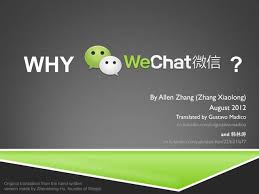- How did WeChat evolve over time, and what factors contributed to its growth?
- What societal changes did WeChat bring about in terms of interpersonal connections?
- What are some of the darker aspects of WeChat’s connectivity, particularly regarding issues like prostitution?
- How did the government respond to the challenges posed by WeChat, and what measures were taken to protect users?
- Why did Weibo experience a decline, and how did WeChat capitalize on this shift in social dynamics?
- How does WeChat’s influence on business and society differ from platforms like Weibo?
- What opportunities did WeChat offer for businesses in terms of marketing and advertising?
- How has WeChat’s global reach influenced its role in global Chinese communities, and what concerns have arisen regarding government oversight?
- What unique revenue model does WeChat employ, and how does it differ from other social media platforms?
- What are some of the privacy and surveillance concerns associated with WeChat?
- How do geopolitical tensions and regulatory scrutiny affect the future trajectory of WeChat?

Launched in 2011 by Tencent, a leading tech giant in China, WeChat has rapidly grown into a colossal messaging and social media application. Today, it proudly claims a massive user base of 1.313 billion people. This extensive reach not only showcases WeChat’s dominance in the Chinese digital space but also highlights its significant impact and utility as a comprehensive platform for communication, entertainment, and financial transactions across the globe.
Introduction to WeChat
WeChat, owned by Tencent and developed by Allen Zhang, stands as a prominent messaging app with over one billion monthly users, primarily in China. Offering a plethora of features including messaging, video/audio calls, gaming, bill payments, and social networking, WeChat has become an integral part of digital communication.



Evolution and Growth:
Initially launched in 2011 as Weixin and later rebranded as WeChat in 2012, the app rapidly gained traction, hitting 100 million users within a short span. The transition to an English name aimed at global appeal, while still retaining its roots with the name Weixin for its mainland Chinese users.
The Social Revolution of Early WeChat
Transforming Interpersonal Connections
In 2013, WeChat, known as Weixin in China, revolutionized the way young Chinese interacted. Offering a suite of features such as text messaging, voice messages, file sharing, and video calls, it particularly stood out for its ability to connect strangers based on geographic proximity. Users like Tina Peng utilized the app’s novel functionalities like the “Shake” feature, enabling them to meet new people effortlessly, thereby blending digital communication with real-world interactions.
The Youth Phenomenon
WeChat’s user base skewed towards the younger demographic, with 76% of its users aged between 22 and 30. This group, already the most active online and on social media, gravitated towards WeChat for its comprehensive communication tools and social networking features. The app didn’t just facilitate communication; it expanded social circles and became a cornerstone of digital social life.
The Dark Side of Connectivity
Prostitution and the Cleanup Operation
By 2014, WeChat’s expansive reach and user-friendly features had a darker, unintended consequence. Business Insider reported that Tencent, WeChat’s parent company, had to close down 20 million accounts, accounting for 5% of all users, for offering prostitution services. This action, dubbed “Thunder Strike,” was part of a larger effort to “clean up” digital spaces, aligning with the Chinese government’s crackdown on illegal online activities. Alongside, 30,000 fake public accounts were also eliminated to preserve the integrity of the platform.
Regulatory Response and User Protection
The crackdown was a reaction not only to the misuse of WeChat for illegal services but also to safeguard legitimate users from fraudulent activities. With many relying on WeChat as a news source and communication tool, the platform pledged to enhance user experience by eliminating accounts distributing illegal information. This move was in concert with the State Internet Information Office’s initiative to maintain public interests and order in the cyberspace, reflecting the broader regulatory landscape in China.
Weibo’s Decline and WeChat’s Ascent
Shift in Social Dynamics
Between 2009 and 2013, Weibo reigned as China’s top social forum. However, in 2013, a government crackdown targeting influential verified commentators, known as the “Big Vs,” led to a decline in Weibo’s popularity. This prompted users to seek alternative platforms, coinciding with the rising prominence of Weixin (WeChat).
WeChat’s Emergence
By 2014, WeChat surpassed Weibo in popularity, offering a broader range of features and seizing the opportunity presented by Weibo’s decline. With 468 million active users, WeChat’s multifunctional capabilities attracted users seeking a more integrated communication experience.
Changing Social Landscape
Weibo, akin to Twitter, primarily served as a public platform, while WeChat offered a more intimate environment for communication among friends and acquaintances. This distinction contributed to WeChat’s appeal, aligning with the preferences of Chinese users, especially as smartphone usage surged.
WeChat’s Influence on Business and Society
Direct Consumer Engagement
WeChat’s closed-circle communication model enabled direct relationships between brands and consumers, fostering personalized interactions. Companies like Burberry leveraged WeChat’s platform to engage consumers through innovative campaigns, integrating real-time events and interactive features to build brand loyalty.
Family and Social Dynamics
WeChat’s influence extended beyond business, facilitating familial connections and bridging generational gaps. Features like video chat became integral to maintaining relationships, illustrating WeChat’s significance beyond mere communication.
WeChat’s Evolution and Monetization
Mini Programs Revolution
WeChat introduced mini programs in 2018, enhancing user engagement by offering lightweight applications within the platform. This innovation aimed to keep users within the WeChat ecosystem, providing convenience and functionality without requiring separate app downloads.
Business Opportunities and Advertising
For businesses, WeChat presented lucrative opportunities for marketing and customer relationship management. WeChat official accounts enabled direct engagement with followers, while advertising options like banner ads and Moments ads expanded revenue streams.
WeChat’s Global Impact and Surveillance Concerns
Global Reach and Government Oversight
WeChat’s widespread adoption extended beyond China, becoming a vital communication tool for global Chinese communities. However, its growth also raised concerns about government surveillance and censorship, given its role in monitoring dissident activities and controlling information flow.
Role in News and Information
Despite surveillance concerns, WeChat emerged as a platform for muckraking and breaking news, empowering journalists and writers to expose malfeasance. While subjected to censorship, WeChat provided avenues for investigative reporting and discussion, albeit within the confines of government scrutiny.


Unique Revenue Model
Diverging from traditional ad-driven models, WeChat derives its revenue from gaming, paid upgrades, and transaction fees, minimizing intrusive advertisements. Despite its revenue streams, the app maintains a visually appealing interface, reflecting Allen Zhang’s emphasis on aesthetics.
Privacy and Surveillance Concerns
While WeChat claims not to sell user data, it lacks end-to-end encryption, raising privacy concerns. Critics often portray WeChat as a tool for Chinese government surveillance, with instances of users facing repercussions for dissenting opinions or discussing sensitive topics. The app’s compliance with Chinese authorities and its role in stifling dissent have drawn significant criticism.
Geopolitical Tensions and Regulatory Scrutiny
Amid escalating tensions between the United States and China, former President Donald Trump sought to ban WeChat, alongside TikTok, citing national security risks. However, the ban was not enforced during his tenure and was later rescinded by President Joe Biden, who initiated a security review of both apps instead.
Conclusion:
In summary, WeChat’s journey reflects the intersection of technology, society, and regulation. While it revolutionized communication and social interaction, it also faced issues like privacy and censorship. As global tensions and regulations evolve, WeChat’s future direction will depend on how it navigates these complexities. Tencent’s efforts to address concerns demonstrate the ongoing quest to maintain a secure and dynamic platform for its users.
Top of Form Evolution and Growth Transforming Interpersonal Connections, The Social Revolution of Early WeChat, The Dark Side of Connectivity Prostitution and the Cleanup Operation Regulatory , Response and User Protection Weibo’s Decline and WeChat’s Ascent Shift in Social Dynamics, WeChat’s Emergence Weibo, akin to Twitter, primarily served as a public platform, while WeChat offered a Changing Social Landscape, WeChat’s Influence on Business and Society, WeChat’s Evolution and Monetization, WeChat introduced mini programs in 2018, enhancing user engagement by offering Mini Programs, Revolution For businesses, WeChat presented lucrative opportunities for marketing and customer Business Opportunities and Advertising, WeChat’s Global Impact and Surveillance Concerns Global Reach and Government Oversight Role in News and Information, Unique Revenue Model Privacy and Surveillance Concerns Geopolitical Tensions and Regulatory Scrutiny, wechat Conclusion,

Prof. Mian Waqar Ahmad
Prof. Mian Waqar Ahmad, a dynamic force straddling the realms of academia and digital media. As a distinguished Lecturer in Information Sciences, he imparts knowledge within the academic sphere, igniting the minds of his students. Beyond the classroom, Prof. Mian Waqar Ahmad dons the hat of a seasoned blogger on Worldstan.com, where his insightful posts delve into the intricacies of information sciences. His digital footprint extends even further as a YouTuber, leveraging the platform to share his expertise and make complex concepts accessible to a global audience. Prof. Mian Waqar Ahmad’s journey embodies the fusion of traditional education and contemporary digital outreach, leaving an indelible mark on the evolving landscape of information sciences. Explore his world at Worldstan.com and witness the convergence of academia and the digital frontier.
